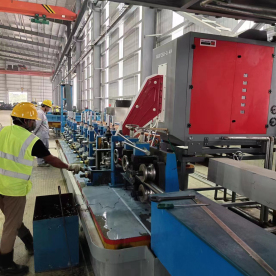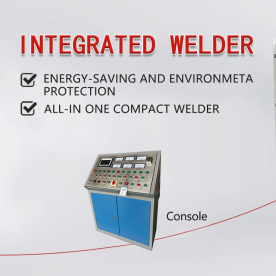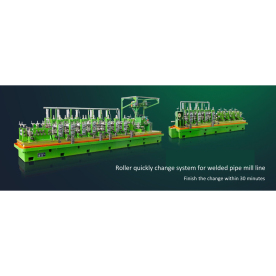[Pipe mill production line]Pipe Mill Production Line: A Comprehensive Guide to Efficiently Manufacturing Pipes
News 2025-3-23

Pipe Mill Production Line: A Comprehensive Guide to Efficiently Manufacturing Pipes

Pipe Mill Production Line: A Comprehensive Guide to Efficiently Manufacturing Pipes
What is a Pipe Mill Production Line?
A pipe mill production line is a series of machines and processes used to manufacture pipes products. It includes machines for rolling, forming, welding, cutting, and finishing pipes sections. The production line ensures consistent quality, high productivity, and cost-efficiency in pipe manufacturing.
Components of a Pipe Mill Production Line
1. Raw Material Preparation: The production line starts with the preparation of raw materials, such as steel billets or coils. These materials are cut and prepared for further processing.
2. Rolling and Forming: In this stage, the raw material is rolled and formed into the desired shape of the pipe. This process involves the use of rolling mills and forming machines.
3. Welding: Once the pipe is formed, the edges are welded together to create a continuous pipe. Welding ensures the strength and integrity of the pipe.
4. Cutting and Lengthening: The pipe is then cut into the desired lengths and may undergo additional lengthening processes if necessary.
5. Finishing: After cutting, the pipes undergoes finishing processes such as deburring, polishing, and coating to ensure its final quality and durability.
Operations of a Pipe Mill Production Line
The operation of a pipe mill production line involves several steps, including setting up the machines, feeding the raw material, monitoring the production process, and inspecting the finished products. Operators need to have extensive knowledge of the machines and the processes to ensure efficient and safe operation. Regular maintenance and upkeep are also essential to ensure optimal performance and reduce downtime.
Latest Advancements in Pipe Mill Production Lines

Pipe Mill Production Line: A Comprehensive Guide to Efficiently Manufacturing Pipes
1. Automation: Automation systems are being increasingly used in pipe mill production lines to reduce manual labor and improve productivity. These systems can handle various tasks, from feeding raw material to inspecting finished products.
2. Robotics: Robotics technology is being used in pipe mills to handle dangerous or repetitive tasks, ensuring safety and improving efficiency.
3. Digitalization: Digital technologies such as IoT and Big Data analytics are being used to monitor and optimize the production process in real-time, improving decision-making and production efficiency.
In conclusion, the pipe mill production line is a crucial component in the efficient manufacture of pipes products. Understanding its components, operations, and the latest advancements in the industry is essential for ensuring optimal performance and cost-efficiency. With the continuous evolution of technology, pipe mills are becoming more efficient and sustainable, leading to better quality products and improved productivity.
